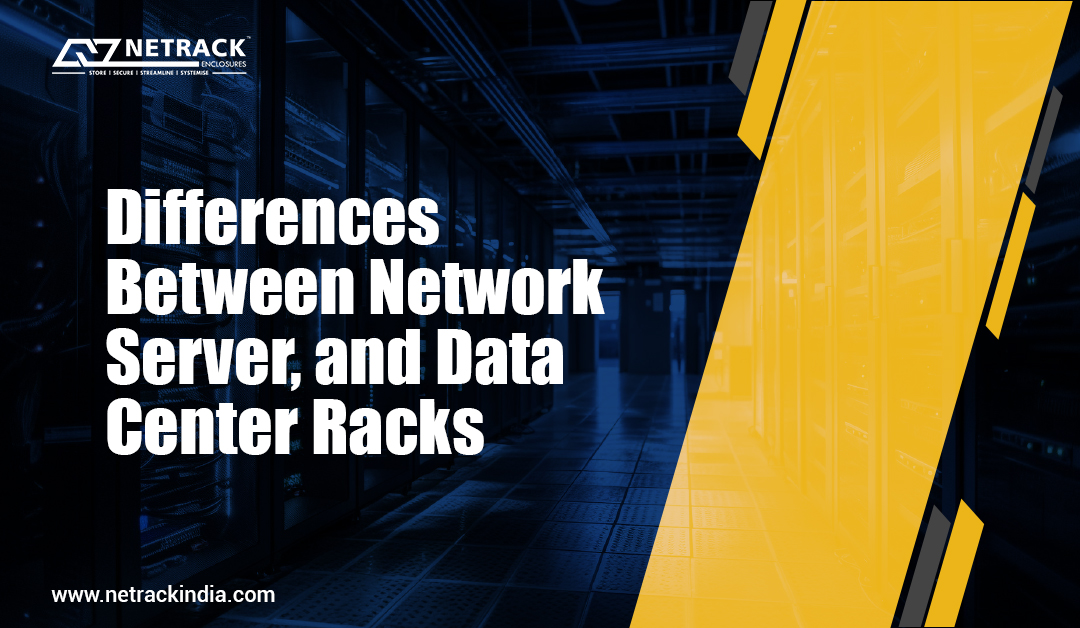
Differences Between Network, Server, and Data Center Racks
In the world of IT infrastructure, the backbone of efficient organization and equipment management lies in the choice of racks. These unassuming metal structures play a pivotal role in keeping our data flowing, our applications running, and our businesses thriving.
Understanding their characteristics, dimensions, load capacity, and functions is crucial to grasp the distinctions between these racks. Network and server racks are vital in data centers, ensuring security, operational stability, and competitive edge. These purpose-built enclosures organize and safeguard networking and server equipment in various IT settings, offering an efficient and secure infrastructure management solution.
Both network and server racks optimize the space and efficiently house your networking and computing equipment, saving you precious floor space. However, there are specific differences. A network rack, or network cabinet or enclosure, is designed to house and organize networking equipment such as routers, switches, patch panels, modems, and other networking devices.
Foundation of connectivity
Let’s start with the network rack that are designed to streamline the organization of devices like routers, switches, patch panels, and modems. These racks adhere to specific dimensions, with a width ranging from 800 to 900 millimeters. The width often hinges on the number of cables in play. A wider configuration provides more cable management space, ensuring a tidy and hassle-free setup.
The height of a network rack is measured in rack units (RU), and standard measurements include 12U, 16U, 24U, and beyond. The choice here depends on the number of networking devices you plan to install. The depth can vary depending on your specific equipment but generally falls within the 800-to-1000-millimeter range.
Hence, Netrack believes that when selecting a network rack, it’s essential to consider the size and quantity of networking equipment a company intends to install. Finally, it is necessary to consider factors like cable management and ventilation to ensure proper organization and cooling of your network equipment within the rack.
Hub of computing power
On the other hand, a server rack is designed to house and organize server equipment. It is the beating heart of a computing infrastructure. Server racks are known for their robust build and optimized design to house servers, storage units, power supplies, and more. The recommended width for server racks is typically 600 millimeters, offering a more compact solution. Like network racks, server racks also come in varying heights, typically starting from 12U and going up to 48U. The height choice should align with the number of servers and equipment you intend to house within the rack.
Server racks typically include cable management systems, cooling solutions like fans or built-in cooling units, and easy access for maintenance and upgrades. They are designed with more robust cooling options to prevent overheating in densely populated server environments.
The epicenter of high-density computing
Data center racks need to accommodate diverse equipment, from servers and networking gear to PDUs and cabling. As a result, the dimensions are more versatile. To maintain a uniform setup, the width of data center racks is generally similar to server racks, at around 600 millimeters. However, the load capacity becomes a crucial factor here. Data center racks come in various load capacity variants, ranging from low density (for lighter loads) to medium density (with a load capacity of 1250 kilograms) and high density (capable of handling up to 1500 kilograms). The choice of load capacity depends on the density of equipment you plan to install, which can vary significantly in a data center environment.
For typical IT applications, the depth of the rack can vary from 800 to 1000, but for data centers, 1200 millimeters is recommended. This depth allows ample space for mounting PDUs and facilitating proper cable management while ensuring efficient hot air movement, a critical factor in data center cooling strategies.
Last word!
A choice of rack can significantly impact the organization, accessibility, and efficiency of an IT environment. Hence, Netrack recommends organizations select a rack as per specific needs, dimensions, load capacity, and the equipment it needs to house to make an informed choice.




